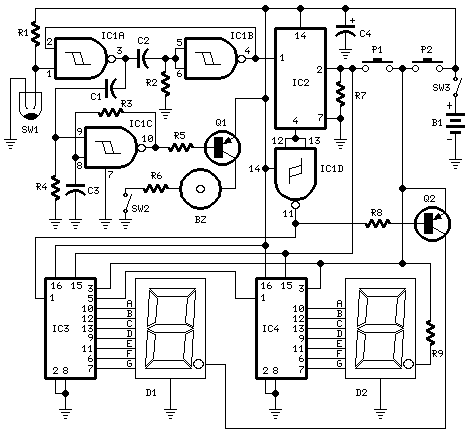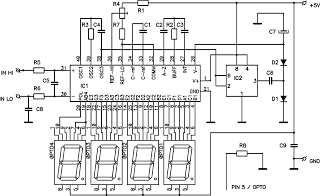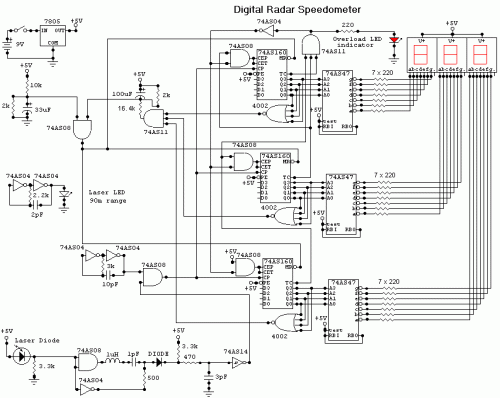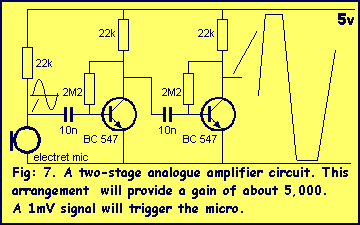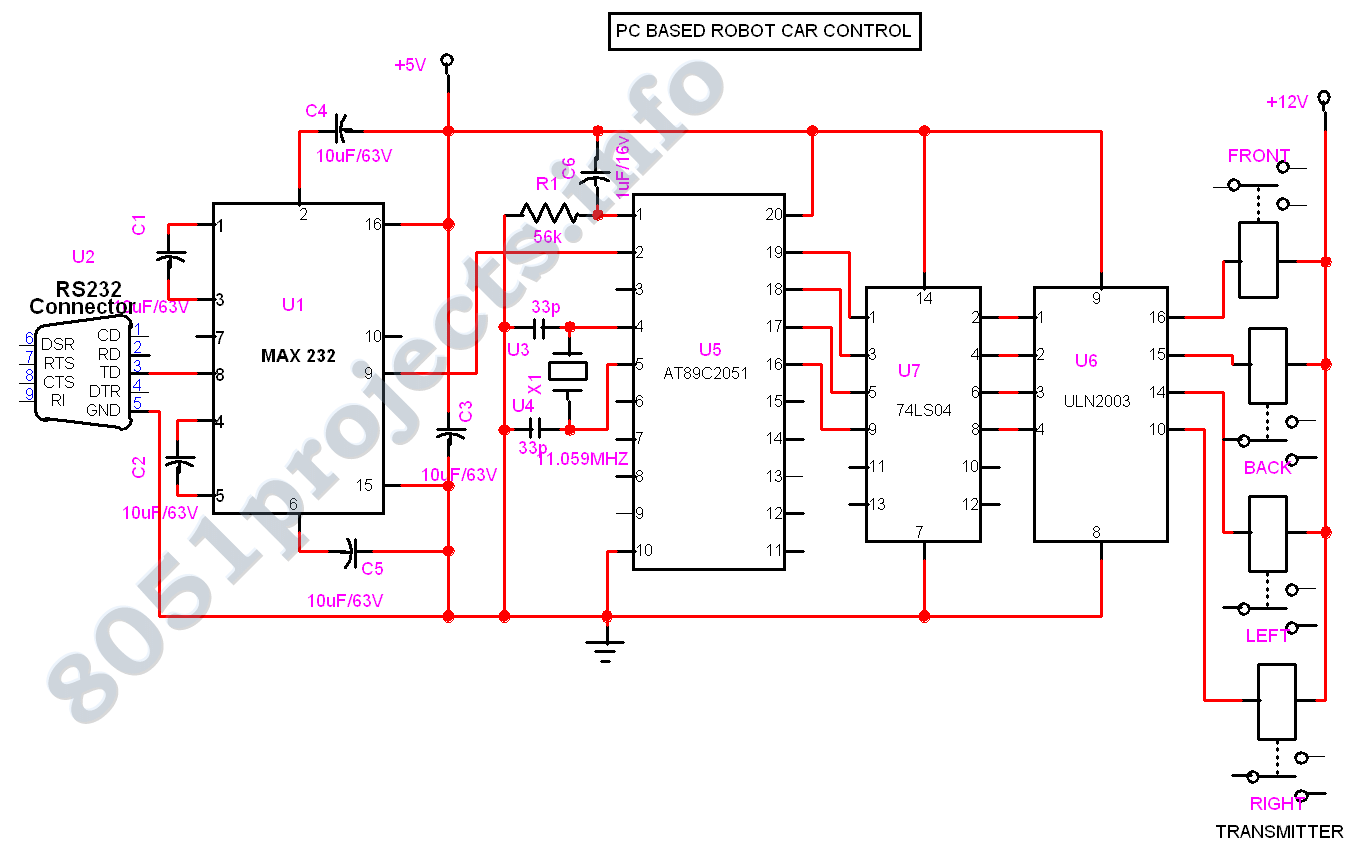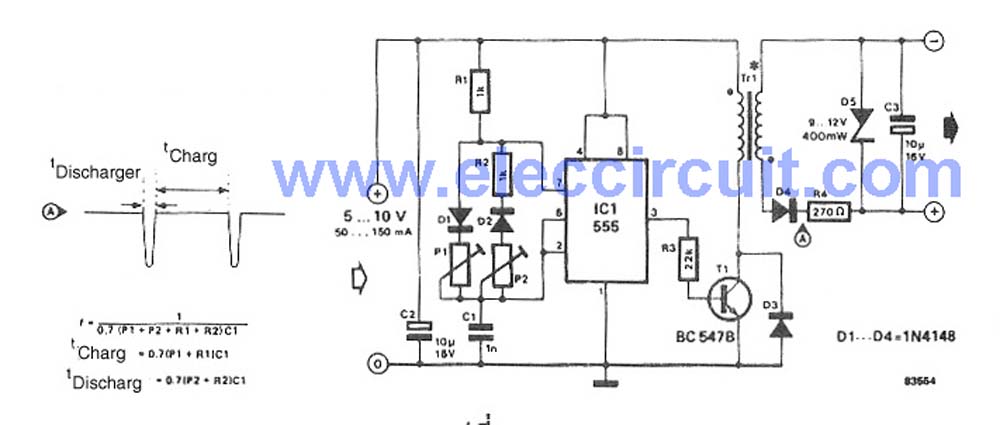
Digital event Counter AT89C2051
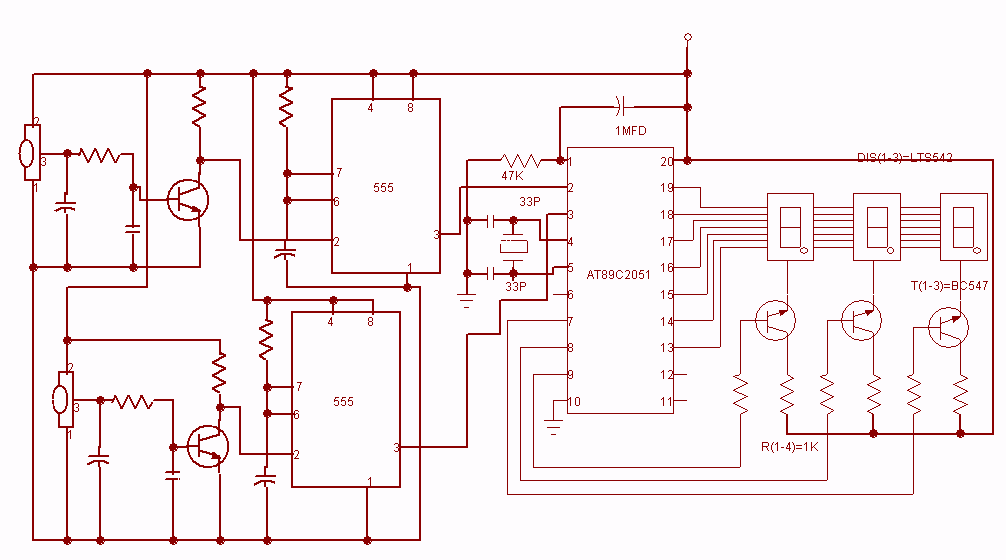
Digital visitor counter is a reliable circuit that takes over the task of counting Number of Persons/ Visitors in the Room very Accurately. When somebody enters into the Room then the Counter is Incremented by one and when any one leaves the room then the Counter is Decremented by One. The total number of Persons inside the Room is displayed on the seven segment displays. More: The microcontroller do the above job it receives the signals from the sensors, and this signals operated under the control of software which is stored in ROM.
The digital visitor counter circuit employs a microcontroller as the central processing unit, responsible for managing the counting logic and interfacing with peripheral components. The system typically includes two infrared (IR) sensors or ultrasonic sensors positioned at the entrance of the room. These sensors detect the presence of individuals entering or exiting by sensing changes in the environment, such as interruptions in the IR beam or variations in sound waves.
When an individual enters the room, the first sensor is triggered, sending a signal to the microcontroller. The microcontroller increments a counter variable stored in its RAM. Conversely, when an individual exits, the second sensor is triggered, and the microcontroller decrements the counter. This ensures that the displayed count accurately reflects the number of people currently in the room.
The count is displayed on a pair of seven-segment displays, which are driven by the microcontroller through a series of output pins. The microcontroller converts the counter value into a format suitable for the seven-segment display, enabling it to show numbers ranging from 0 to the maximum capacity of the room.
The software controlling the microcontroller is stored in ROM (Read-Only Memory) and includes the logic for counting, debouncing the sensor inputs (to prevent false triggering), and driving the display. The program also incorporates error-checking routines to handle potential discrepancies in the count, ensuring reliable operation over time.
Power for the entire circuit can be supplied through a standard DC power supply or batteries, depending on the intended application and mobility requirements. Additional features may include an LCD display for a more detailed readout, a reset button to clear the count, or an alarm system to notify when the room exceeds a specified capacity. This design provides a robust solution for managing occupancy in various environments, such as offices, theaters, and public facilities.Digital visitor counter is a reliable circuit that takes over the task of counting Number of Persons/ Visitors in the Room very Accurately. When somebody enters into the Room then the Counter is Incremented by one and when any one leaves the room then the Counter is Decremented by One.
The total number of Persons inside the Room is displayed on the seven segment displays. The microcontroller do the above job it receives the signals from the sensors, and this signals operated under the control of software which is stored in ROM 🔗 External reference
The digital visitor counter circuit employs a microcontroller as the central processing unit, responsible for managing the counting logic and interfacing with peripheral components. The system typically includes two infrared (IR) sensors or ultrasonic sensors positioned at the entrance of the room. These sensors detect the presence of individuals entering or exiting by sensing changes in the environment, such as interruptions in the IR beam or variations in sound waves.
When an individual enters the room, the first sensor is triggered, sending a signal to the microcontroller. The microcontroller increments a counter variable stored in its RAM. Conversely, when an individual exits, the second sensor is triggered, and the microcontroller decrements the counter. This ensures that the displayed count accurately reflects the number of people currently in the room.
The count is displayed on a pair of seven-segment displays, which are driven by the microcontroller through a series of output pins. The microcontroller converts the counter value into a format suitable for the seven-segment display, enabling it to show numbers ranging from 0 to the maximum capacity of the room.
The software controlling the microcontroller is stored in ROM (Read-Only Memory) and includes the logic for counting, debouncing the sensor inputs (to prevent false triggering), and driving the display. The program also incorporates error-checking routines to handle potential discrepancies in the count, ensuring reliable operation over time.
Power for the entire circuit can be supplied through a standard DC power supply or batteries, depending on the intended application and mobility requirements. Additional features may include an LCD display for a more detailed readout, a reset button to clear the count, or an alarm system to notify when the room exceeds a specified capacity. This design provides a robust solution for managing occupancy in various environments, such as offices, theaters, and public facilities.Digital visitor counter is a reliable circuit that takes over the task of counting Number of Persons/ Visitors in the Room very Accurately. When somebody enters into the Room then the Counter is Incremented by one and when any one leaves the room then the Counter is Decremented by One.
The total number of Persons inside the Room is displayed on the seven segment displays. The microcontroller do the above job it receives the signals from the sensors, and this signals operated under the control of software which is stored in ROM 🔗 External reference
Warning: include(partials/cookie-banner.php): Failed to open stream: Permission denied in /var/www/html/nextgr/view-circuit.php on line 713
Warning: include(): Failed opening 'partials/cookie-banner.php' for inclusion (include_path='.:/usr/share/php') in /var/www/html/nextgr/view-circuit.php on line 713
